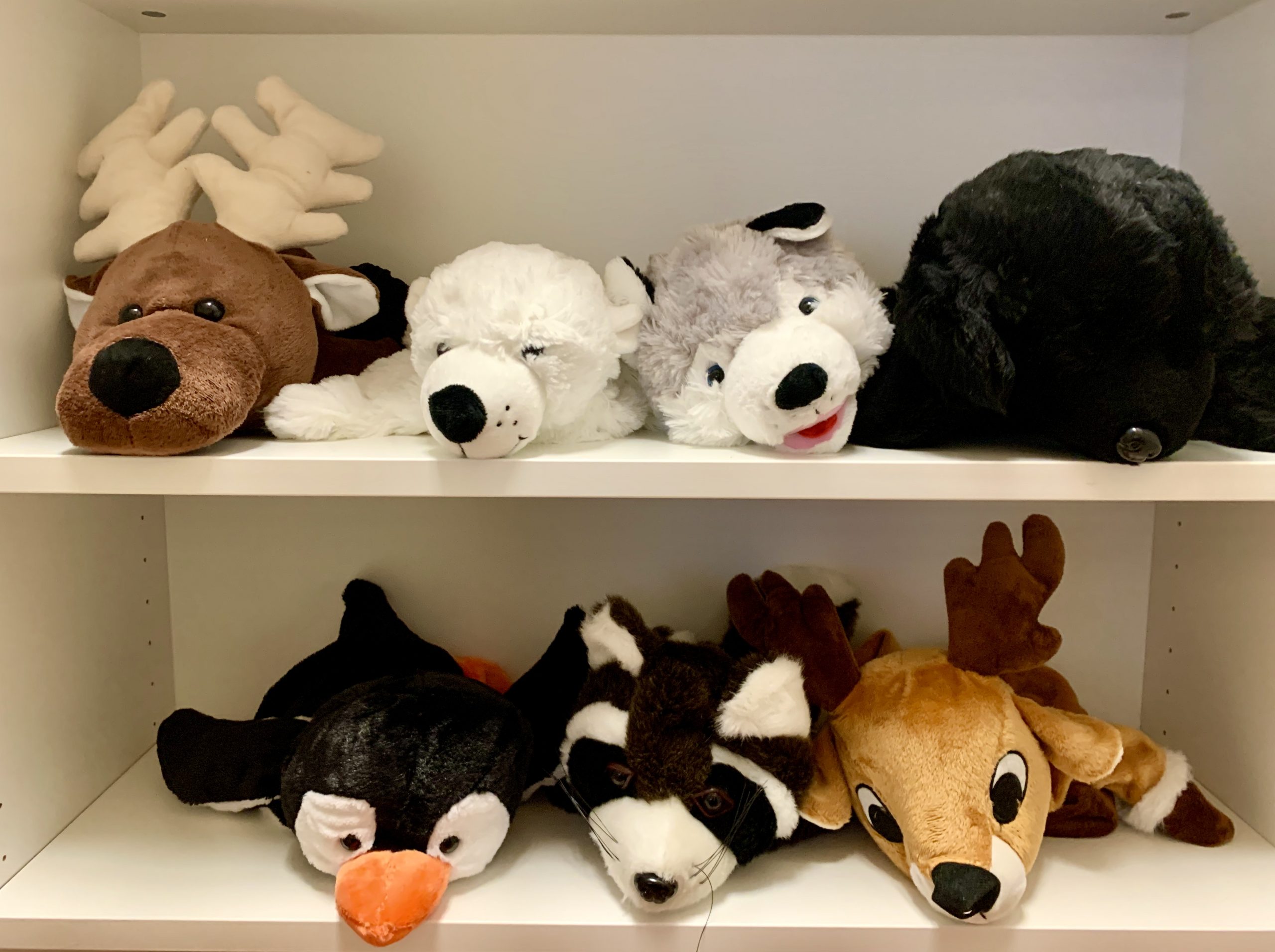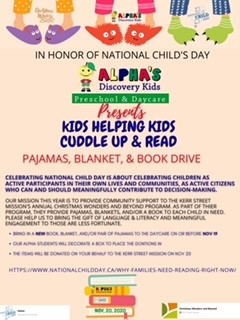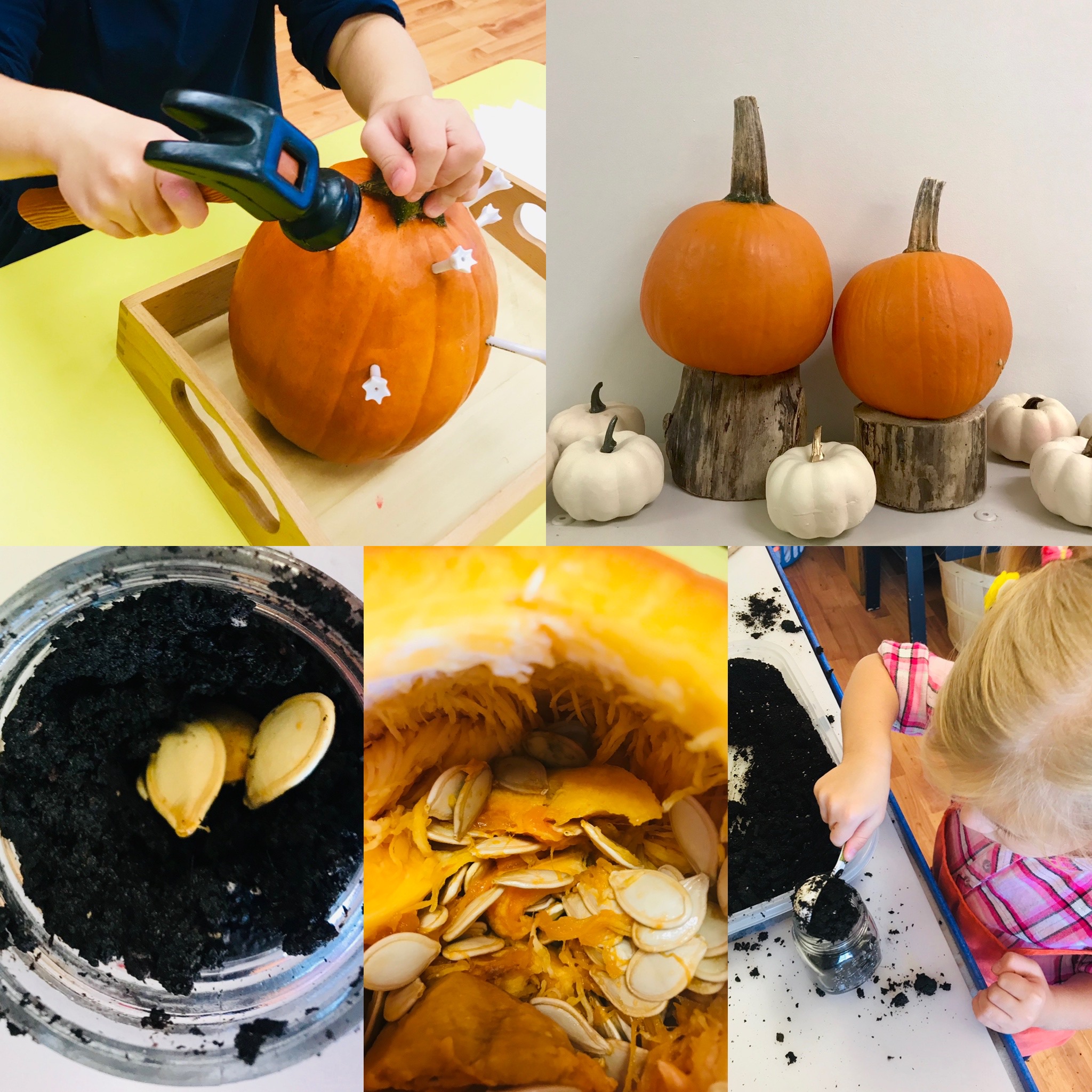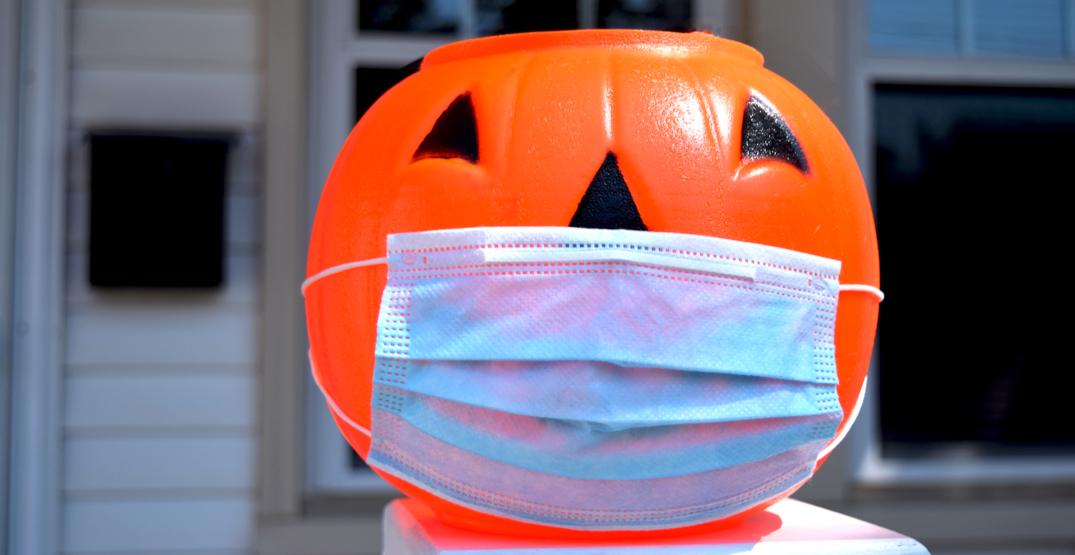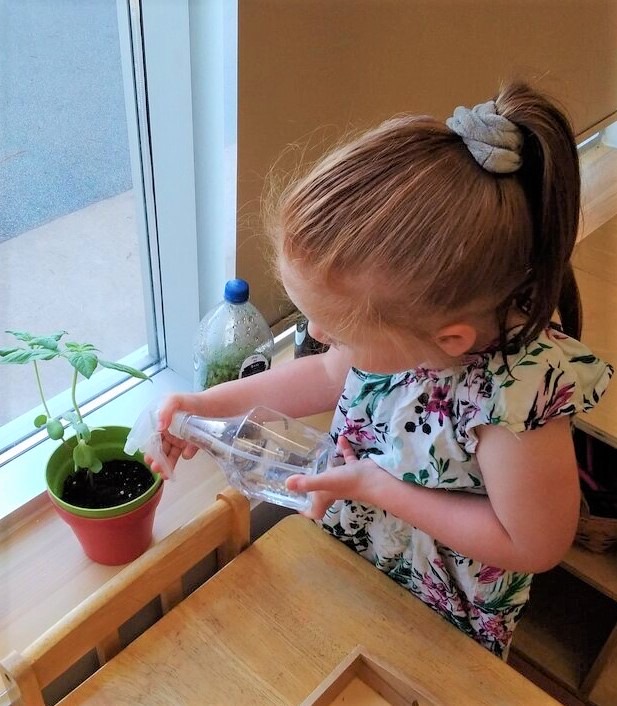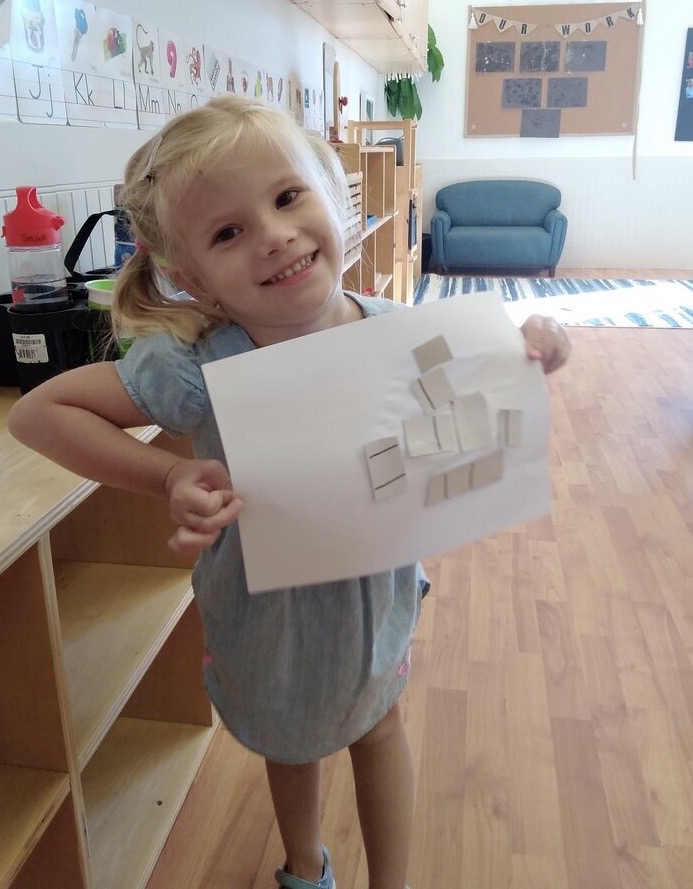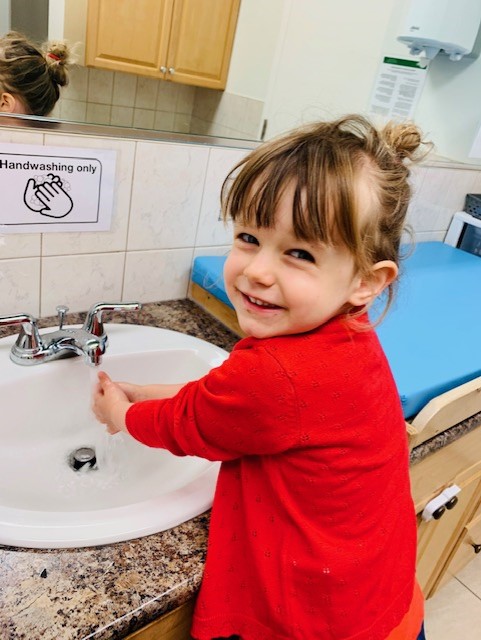Stuffed with Love – Plush Toy Activity and Food Drive
Stuffed with Love – Plush Toy Activity and Food Drive
According to the 2020 Hunger report, food bank use was on the rise pre-COVID -19. With the onset of the pandemic, food banks experienced a surge in demand for food and necessities in communities across the country. As government supports and funding wind down, food bank use is now rapidly increasing. At Alpha Discovery Kids Preschool and Daycare, we understand that families of all tax brackets are struggling to catch up, stay ahead and even keep up. During this special time of year, we want to help, so we have joined “The Compass” in their efforts to gather food items that will be donated to those who really need a helping hand. The Compass is a Food bank and outreach centre located in Port Credit, ½ way between our Oakville and Mississauga centres. Their mission is to provide a place for people to come for help. They offer immediate assistance providing food and living necessities. In addition, they provide practical support, resources, and assistance to individuals with low incomes and or that are facing difficult times and challenges. We have coordinated an event called “Stuffed with Love” where our students will have an opportunity to build and stuff a plush toy called “build a perfect pet” on Dec 17th. We are able to offer these plush toys to our families for no cost thanks to the generous donation of Amber Dinda from Glen Abbey Decor. In addition, during the week of Dec 14-18th we have asked the families to help us stuff & fill something else…. A food donation box. We are accepting non-perishable food items and toiletries, basic needs for living, diapers, feminine products, and pet supplies. Each of our students will bring home a full-sized high-quality plush toy and customized T-shirt as part of the experience. Once they have completed building their “perfect pet” they will take it home with a personalized birth certificate. We are hoping to have a full box of donations from both our Oakville and Mississauga location to be delivered on Dec 21st to The Compass. We know that with all the closures and lockdowns, that these fun events are extra special and mean a lot to our families. It means a lot to us to fill our Alpha’s kids days with meaning and fun activities, but we also want to fill their hearts with opportunities to help others at the same time.
Unique Way to Celebrate Birthdays
Unique Way to Celebrate Birthdays
Everyone wants to be remembered and cherished on the special day that they were born and young children are no exception.
The Montessori “Celebration of Life” is a lovely way to celebrate a child’s birthday in a daycare or school setting. Children love to hear about the journey from their birth to the present day. They want to hear stories, look at photos, and remember wonderful memories. They want to know how cherished they are, and how our life and world is better because they were born into a family and now
belong to our class/ group or school. The Montessori “Celebration of Life” is a wonderful way to celebrate birthdays at school, whether or not
you follow the Montessori philosophy.
Here’s how it works. For the preparation, the parents of the birthday child are asked to bring in a picture for each year of the child’s life starting
with a newborn photo. For example, if the child is 3 years old, 4 pictures are required – Newborn, 1st year, 2nd year and 3rd year.
All the children make a large circle around the sun that has been placed on the floor. Around the sun are each month of the year from January to December. The teacher then begins to describe the birthday child’s journey as she holds up the first picture. The teacher discusses the milestones and accomplishments that have been achieved over each 12 months for the birthday child. They then sing the song below as they hold a globe and slowly circulate it around the sun and stopping once their hand returns to the current month.
This is repeated for each year the birthday child has been on earth. This process places value on the child’s accomplishments and achievements as they have developed since birth.
(to the tune of The Farmer in the Dell):
The earth goes around the sun,
The earth goes around the sun,
The earth goes around the sun,
It takes 1 year to go around,
Another year is done
Then to complete the celebration the following can be sung to the birthday child (to the tune of Happy Birthday):
We celebrate your birth,
And your place on the Earth,
May the sun, moon, and stars,
Bring you peace where you are!
For more information click here.
National Child Day – Cuddle Up and Read
National Child Day
November 20th of every year is a significant day for children in many countries of the world. It is National Child Day. This is a day that celebrates two historic events. The first being the signing of the United Nations (UN) Declaration of the Rights of the Child in 1959.
The second being the adoption of the UN Convention on the Rights of the Child in 1989. The combination of these two documents officially created, the UN Rights of the Child. By ratifying the United Nations Convention on the Rights of the Child in 1991, Canada made a commitment to ensure that all children are treated with dignity and respect. This commitment includes the opportunity for children to have a voice, be protected from harm and be provided with their basic needs and every opportunity to reach their full potential.
Recently, we have been teaching the children about being thankful , grateful and honoring others with recent calendar events such as Thanksgiving and Remembrance day. We want to continue to instill these concepts further by extending our students understanding towards empathy and compassion for others through relatable topics. We will do this by discussing the things that make us comfortable and safe. Things like some time and a hug from a loved one, a warm blanket, cozy Pajamas and a nice bedtime story. Here’s a link with some great information about why reading with a child is important.
To celebrate National Child Day this year, we will have the children become active participants in this “Cuddle Up and Read” outreach project by:
• Children will decorate a donation box called “The Helping Hands Bin”.
• Children will place the donated items such as books, blankets and pajamas they have brought in and make a wish for themselves and for other children in need.
• We will celebrate our accomplishments by having a Pajama Party on November 19th
The items will be donated on National Child Day to the Kerr Street Mission. The items will be added to their Christmas Wonders and Beyond program where they provide, toys, gift cards and P.J’s to each participant in the program.
I would like to thank all our families and teachers for their participation and generosity in advance!
Let’s all cuddle up and read!
Halloween Activities 2020
Halloween Activities 2020
Halloween is just a few days away and 2020 promises to be a different kind of Halloween! Halloween has always been one of my favourite
holidays to celebrate with children. There is so much fun involved for children: the ability to transform yourself for a day in your favourite
character costume, the spooky decorations and of course – the CANDY!
As 2020 has presented some challenges with celebrating holidays according to old traditions, this is an opportunity to find new ways to celebrate
this fun holiday.
Here’s a list of Halloween activities you can do with young children in 2020!
Candy Scavenger Hunt: Kids love going on a scavenger hunt! The process of finding hidden gems (especially candy) is so rewarding and exciting!
You can create your own scavenger hunt or click on this link to print one.
Indoor Trick-or-treating: You don’t have to leave the comfort of your own home to trick-or-treat. You can setup trick-or-treating by going from
room to room in your home and having your child knock on the doors and you can have different people in the house answering the doors and
handing out candy. You can involve grandparents and other extended family members too! This activity is great for toddlers with their short
attention spans. They probably only want to knock on a few doors before they are done
Mummy Wrap: This is one of my favourite Halloween games. All you need is toilet paper and a willing person! You would wrap the toilet paper
around the person and try to cover them all up like a mummy. You now have a use for all the extra toilet paper you may have around the house!
How many Candies in the Jar? This activity will keep your child guessing all night long. Fill a jar with candy and ask your child to guess how many
are in the jar. They can take several guesses and you can record them. You can even extend the game to everyone in the house. Then you can take everything out of the jar and count it. This is not only fun, but it’s also a great math activity for young children.
Bob for Apples: This is a classic Halloween game! You can adapt it for 2020 by making individual bowls to bob for the apples. Each person gets
their own bowl of water with an apple floating in it. The object is to take the apple out without using your hands. Get creative! You can use your mouth, tongs, chopsticks etc.
Decorating yummy treats: This is a great opportunity to explore your creativity by decorating cupcakes or cookies. You can use spooky
decorations, or even candy to decorate with. Kids will develop fine motor skills by spreading the icing and adding the decoration.
Candy Toss: Grab a basket and some candy and create a tossing game. Position the basket a few steps away and ask the child to toss the candy into the basket.
Have fun creating new memories and traditions in 2020! Enjoy! Happy Halloween!
For more Halloween ideas and activities, check our pumpkin and trick-or-treat ideas blog.
Exploring Pumpkin-theme Activities
Exploring Pumpkin-theme Activities using the 4 Pillars of Learning
Fall is the perfect time to engage students in learning experiences around pumpkins. Children are naturally curious about this interesting vegetable that is harvested at this time of year. They will see pumpkins at the grocery store, at the farm or in fall decorations and it’s a great opportunity to explore them with some fun activities. Let’s explore pumpkin-theme activities using the Four Pillars of Learning curriculum to create an amazing learning experience for young children.
Pillar 1 – Language and Literacy
Form letters with Pumpkin Seeds: Write your child’s name on a piece of paper with large printed letters to take up the whole sheet of paper. Have your child stick pumpkin seeds to each of the letters with glue. This visual activity helps the child to learn how to form the letters in a hands-on way. It also builds fine motor skills as they manipulate the pumpkin seeds to stick to the letters.
Pillar 2 – STEAM – Science
Planting Pumpkin Seeds: Cut a small pumpkin in half and have children scoop out the pumpkin seeds (using their hands or a spoon). This can get messy, so make sure you have some wipes handy when their hands are covered in pumpkin guts. Clean the seeds and have the children plant the seeds in a small jar filled with soil. Water the seeds, place in a sunny place by the window and watch what happens. You can use the leftover seeds and toast them in the oven for a tasty treat!
Pillar 2 – STEAM – Technology
It’s the Great Pumpkin Charlie Brown: One of my favourite stories to read in the Fall is “It’s the Great Pumpkin, Charlie Brown” which is also a 1966 American prime time animated television special based on the comic strip Peanuts by Charles M. Schulz. You can try to watch it on TV, read the book or even try to find it on Youtube. There is even an app with a game you can play based on this story.
Pillar 2 – STEAM – Engineering
Golf Tee Pumpkin Hammering: All you need for this activity is a small pumpkin, a hammer and some golf tees. The activity involves hammering the golf tees into the pumpkin. You can demonstrate how to use the hammer by doing a few and then giving the child the opportunity to try it. You can use hand-over-hand if you are worried about their ability to handle the hammer. You can also find small hammers at the dollar store for young children to use. It’s best to use a real hammer instead of a toy one. This is a great activity to empower children to work with a tool that they wouldn’t normally get to use.
Pillar 2 – Art
Pumpkin Stamping: Cut a mini pumpkin in half and remove the “guts” (Save the seeds for other activities). Use the half pumpkin shape as a stamp. You can dip it in paint or a stamp pad and then stamp on paper.
Pillar 2 – STEAM – Math
Pumpkin Math: There are so many ways to incorporate math with mini pumpkins. You can count them or sort them by colour or size. You can also measure different size pumpkins and compare the sizes. With the seeds, you can create 5 sheets of paper with the numbers 1-5 written on them. Have children count out seeds and place them on the paper corresponding to that number. For example, count two seeds and place them on the number 2.
Pillar 3 – Physical Activity
Pumpkin Toss: This activity reminds me of a fall fair where you would typically see a ball toss or ring toss game. Set up a basket or barrel at a short distance away. Get 4-5 mini pumpkins and make a game of tossing them in the basket.
Pillar 4 – Mindful Awareness
Pumpkin Breathing: This deep breathing activity uses a simple picture of a pumpkin, but you can use a real pumpkin, too. The small decorative gourds or pie pumpkins are perfect for this activity, because kids can hold the small pumpkin in their hands and feel the weight of the pumpkin as they complete the breathing strategy. Using a pumpkin picture or real pumpkin, show kids how to use deep breathing as a coping tool by taking calming breaths while they trace the lines of the pumpkin. Trace the lines up toward the stem while taking a deep breath in. Hold the breath for a few seconds and then trace a line down another section of the pumpkin while slowly breathing out. Hold that breath for a few seconds. Repeat this process as you slowly trace up and down the sections of the pumpkin.
These are just some of the pumpkin-theme activities we do at Alpha’s Discovery Kids Preschool and Daycare using our Four Pillars of Learning curriculum. Enjoy! Stay tuned to our next blog for more fun Halloween activity ideas.
Halloween 2020 – The spookiest one yet! TO TRICK-OR-TREAT OR NOT?
Halloween 2020 -The Spookiest one yet! TO TRICK-OR-TREAT OR NOT TO TRICK-OR-TREAT?
Holidays help us maintain our sense of rituals and ‘normalcy’ during a not-so normal time, but since March 2020, we have had to find new ways to celebrate holidays, traditions and spec ial occasions. Will blowing out birthday candles or bobbing for apples become a thing of the past? What about trick-or-treating?
As we approach Halloween 2020, there are diverse views on whether trick-or-treating should happen this year. Some argue that cancelling the holiday would be a major economic disruption to a billion-dollar industry in a time when the economy has suffered due to COVID-19. While others ascertain that there are serious risks to health and safety involved in the activity of trick-or-treating that could lead us toward another shut down. Whether you agree with those that want to cancel or not, why not make the best of Halloween 2020 with the spookiest Halloween yet! We will share some fun Halloween ideas for both those that want to trick-or-treat and those that don’t.
For those that want to trick-or-treat, here’s some ideas to enjoy it in a safer way:
- Have children wear masks and gloves and make it a part of their costume.
- Leave baskets of candy on a table in the driveway so kids don’t need to come to the door or ring your doorbell.
- Create individual bags of candy that are easy to hand out. Ensure all candies are have a wrapper.
- Avoid gathering in large groups for trick or treating. Instead, keep the group to 2-4 kids.
- Create a fun atmosphere by decorating the outside of your home.
- If you are still not comfortable going out to a stranger’s home, you can trick-or-treat by going to family or friends’ homes only.
For those that want to explore other Halloween activities:
- Pumpkin carving/decorating contest – involve the whole family to see who can make the scariest/funniest pumpkin.
- Make Halloween play dough. Check our Facebook page for a great pumpkin spice play dough recipe.
- Go on a Halloween candy scavenger hunt! Click on this link to print one. https://heyletsmakestuff.com/printable-halloween-candy-scavenger-hunt/
- Decorate spooky cupcakes with Halloween candy.
- Have a Halloween dance party in your own home.
- Make a Halloween obstacle course. Here’s a link for a great spider lair obstacle course. https://www.chickenbabies.com/2011/10/lair-of-spider-queen.html
- Make a magic potion. Mix ingredients and learn some science too!
- Pumpkin-theme activities. Stay tuned for our next blog with lots of pumpkin-themed activities and ideas.
- Halloween Games – Stay tuned to future blogs this month with more Halloween games and activities.
As you can see, there are lots of ways to make 2020 an amazing Halloween – even if you are not trick-or-treating! We will be enjoying these and many more activities at Alpha’s Discovery Kids Preschool and Daycare! Happy Halloween!
The Written Word: Is writing a lost skill?
The Importance of the Written Word: Is writing a lost skill?
When was the last time you opened your mailbox to find a beautifully handwritten letter? Probably not in the last week, or even decade. Gone are the days when students had designated writing classes, in which they used workbooks with dotted lines to practise forming the perfect loops for Ls and Ys under the watchful eye of their teacher.
That might not be a good thing.
New research shows that dropping handwriting lessons from schools could negatively impact brain development in children.
In a digital age where we seem to only require keyboard and texting abilities, printing and cursive writing seem to have fallen by the wayside.
Many people might say, “So what’s wrong with that. Everybody types now anyway.”
Well, there is a report written in the New York Times that states that children not only learn to read more quickly when they learn to write by hand but they are also better able to generate ideas and retain information. Psychologists and neuroscientists have discovered a link between handwriting and broader educational development. They say it is far too soon to declare handwriting a relic of the past. New evidence suggests that the links between handwriting and broader educational development run deep. When we write, a unique neural circuit is automatically activated. It seems that this circuit is contributing in unique ways we did not realize.
It’s sparked much debate.
Some believe cursive writing is no longer a necessary skill and wastes valuable teaching time. There are others who believe it’s an essential part of childhood education and a needed skill as an adult.
The key problem is many teens and young adults in 2020 cannot sign their name…
You need to learn to crawl before you can walk !
At Alpha’s Discovery Kids, we believe that learning how to print and write is important. In fact, learning writing skills starts in our Toddler room with the Jolly Phonics program and progresses through our preschool and Kindergarten programs. In the Sr. Preschool-Kindergarten program we have introduced Progressive Printing cards as part of our curriculum.
While this topic has sparked debate, we have been sparking interest. We have incorporated some good old-fashioned printing practice into our emergent based program. We believe that the basic functional skills needed to write starts with a progressive approach to fine motor development and phonics.
Unlike those days when we were forced to sit and print or write letters repetitively, we have a different approach. We make it fun and instill a sense of pride and independence by giving the students the assistance they need to feel empowered to write words, starting with their own name.
We love to see the progression of the written word each day with all our children and build confidence in our students.
For more information about our program, visit our Curriculum page
Have you ever wondered why they call it Kindergarten?
Have you ever wondered why they call it Kindergarten?
As many parents get ready to send their little 4 -5 year olds to Kindergarten, you may be wondering why we call it Kindergarten. The word kindergarten comes from the German language. The term dates to the 1840’s and was created by Friedrich Froebel who started the first kindergarten, “Garden of Children “.
The word Kindergarten symbolized his vision for early childhood education: “Children are like tiny flowers; they are varied and need care, but each is beautiful alone and glorious when seen in the community of peers.” Before 1840, children under the age of 7 did not attend school yet. Froebel was an educator who believed in hands-on learning for children. He also had a love for nature, science, architecture, and mathematics. He felt children needed to be “nurtured and caringly tended to like plants in a garden.” Hence, he founded an early education program for young children, which he called kindergarten.
It was a place where children could develop and flourish freely through self- directed play under the guidance, not direction, of the teacher. His belief system was an inspiration to many educators and philosophers including Maria Montessori. It is easy to see his influence in her work. Maria Montessori was the first to introduce a child-sized environment. She wanted the children to feel that the classroom belonged to them rather than the teachers.
These ideas have had a huge impact on how preschool and kindergarten have developed over the years. As we approach back to school this year amongst uncertainty due to the global pandemic, we must remind ourselves of the initial motivation, “Children are like tiny flowers; they are varied and need care. “Like plants and flowers, children are fragile yet resilient. Parents and educators alike share the responsibility of keeping these precious little ones safe. We want to provide a place for them to grow and flourish while shielding them from the elements!
At Alpha’s Discovery Kids Preschool and Daycare, we are growing too. We have created a new Kindergarten program where children 3.5-5 years old can grow and flourish in a place that belongs to them. We have enhanced our Four Pillars of Learning curriculum for this age group to challenge them further. Our stimulating program allows children to grow along side their peers and gives parents the reassurance that their children are in a safe environment. We have large classrooms with less then full capacity ratios to create more space for physical distancing within the day. If you would like to find out more about our Kindergarten program, click here.
Wherever you may choose to grow your flower(s) let us not lose sight of the foundations, inspirations and intentions set into motion in 1840 with “Kindergarten”! We wish all our little flowers a prosperous year full of growth and new learning opportunities!
Sr. Preschool/Kindergarten Program – Ages 3.5-5 years
SENIOR PRESCHOOL/KINDERGARTEN PROGRAM – AGES 3.5-5 years
Alpha’s Discovery Kids Sr. Preschool/Kindergarten program offers advanced academic opportunities which promote learning readiness for primary school preparation. Our Kindergarten program is based on our unique curriculum called the Four Pillars of Learning, which incorporates a holistic approach to learning using the four pillars. As our students become more independent, we can devote more time to an increased level of academics. We approach this as an opportunity to build upon each child’s abilities and strengths to reach full potential in all areas. Our holistic approach is consistently based on providing a sense of belonging, engagement, security, and nurturing. We provide an environment that is stimulating, fosters curiosity and encourages inquiry-based learning. We provide child-led and teacher supported learning experiences to encourage the mental, physical and spiritual growth of our students. We strive to achieve the utmost quality of care while working along side families as a partnership. The relationship we strive to create allows us to fully to embrace, encourage and maximize learning and support well being in each individual child. This program is designed to build skills, confidence and empower the “Alpha” in each one of our students before moving into the primary grades.
Four pillars planning time –The children will come to the table to gather where they will have their printing cards ready for them. During this gathering time the educator will present any new options that are available in the room for the morning work period. The children will have an opportunity to choose which activities they would like to work on, or what materials they would like to explore. The educators will recognize each choice and what area of the room the child is interested in. The educators will also encourage inquiry to further engage the children’s minds, promote exploration as well as develop further awareness and mindfulness as they carry out their learning each day.
Pillar 1 – Language and Literacy
Language and Literacy is our first pillar of learning as we focus on building communication skills as the foundation of all other learning.
Progressive printing cards –This fine motor/literacy activity will allow the children to progressively improve upon their printing skills each day. This process will be gradual and based on each child’s ability level. This process may begin with hand over hand, tracing and eventually as their abilities progress, the children will soon be able to print words independently (starting with their own names). This process will prepare children for name recognition and lead to phonological awareness and the ability to read and write.
Phonics – We will be using an inductive approach to motivate the children to learning letter sounds. By using the multi-sensory components of the Jolly Phonics program, we can make learning synthetic phonics fun. We do this by incorporating songs and games into their activities.
Pillar 2 – STEAM Learning (Science, Technology, Engineering, Art and Math)
Work Time – Educators will plan activities to explore STEAM learning each day. During Work Time, children will choose areas of the classroom to explore Science, Technology, Engineering, Art, Math, Language, Literacy, Nature, Fine motor, Dramatic, Music and Movement, Sensory Activities. Children will explore materials in the classroom in each of these areas in a meaningful and purposeful way. The Work Time period takes place two times per day, in the morning and afternoon.
Collaborative Reflection Time and Showcase of work – During work time, the children will be able to put their name card on any work they would like to save and share during gathering time. If it is not possible to save the work, a photo will be taken so that it can be shared with the group. During collaborative reflection time, the children will be given the opportunity to share their work or photo (both independent and collaborative). This process will enhance the children’s experience during work time, allowing a focus on uninterrupted work schedules and helping to develop their skills in whatever domain they are working (fine motor, spatial relationships, creativity, problem solving, language and literacy etc.). Additionally, allowing children time to present their work within a group environment, with the active help of their teacher, will support children’s socio-emotional development, self-confidence, descriptive language, stimulating peer interactions and co-operative skills. This will inevitability build upon each child’s natural curiosities individually and as a group.
Collaborative Lesson – In the afternoon, there will be a teacher-led presentation of material and activity demonstration to build further inquiry in Math, Science, Language, Literacy and French. This will be an opportunity for each child to gather and learn through collaboration with the educator and peers. This gives the educator an opportunity to plant seeds to create new interest and inquiry-based learning or build upon existing interests within the classroom. Following this lesson, the children will have the opportunity to work independently in addition to working in collaboration with peers.
Pillar 3 – Physical Activity and Nutrition
Outdoor Time – Developing a lifelong healthy lifestyle starts in the early years. Our third pillar of learning is an important component of our program to not only provide opportunities for physical activity and healthy meals but also to instill the importance of the overall health benefits of both. We offer two outdoor time periods in the day (morning and afternoon) for physical activities as well as indoor physical activities to promote physical fitness and well being. We strongly believe that fresh air and engaging in nature along with healthy eating are valuable daily practices at all times of the year.
Lunch/Snack Time – We reinforce a healthy lifestyle by modelling healthy eating habits and participating in family-style dining with the children. We discuss portions, nutritional facts and provide a variety of food choices to help children develop an understanding of how to take care of the human body.
Daily Routines – Including daily routines where the children practice independent tasks such as pouring, scraping their dishes, cleaning up after themselves and using manners, we build on other valuable areas of development such as physical fine motor skills, accountability, confidence and empowerment.
Pillar 4 – Mindful Awareness
Mindfulness is incorporated in all parts of the daily routine and curriculum. Educators reinforce this concept through daily conversations and interactions between educators and children. We discuss choices and acknowledge feelings to create awareness within and promote social-emotional health and self-regulation skills. Educators provide tools and strategies to help children to learn how to manage stress, anxiety and interact with peers in a positive manner.
Mindful Yoga – During our mindful yoga practice, we reinforce this by honouring our physical health and promoting self-regulation. This part of the daily routine is intended to provide the children an opportunity to go within and experience a sense of calm each day. This practice encourages the children to shift gears and allow for quiet self-reflection within their minds and bodies. This practice will be carried out in several different methods and the children will be encouraged to embrace this as a tool to manage stress, anxiety, increase self-control, and sustain attention. Children will develop the ability to focus, visualize, improve balance and develop an acceptance of self and others.
To learn more and register for the program: click here
Sr Preschool-Kindergarten Program Schedule 2020_ Fall
Daycare during a Pandemic: What Does Engagement Look Like Now?
Leading up to the days prior to re-opening daycare following the pandemic closure, we all had so many questions and fears of the unknown. As educators, we want to do our best to create an environment that keeps children physically safe and healthy. Parents may have question too because although they may trust their educators and caregivers, the situation is new to all of us. But the question remains for all, how do we provide a safe environment according to the guidelines without creating an institutional feel within the classroom?
What does engagement look like now?
Educators and parents often share many common goals when it comes to children. We all want and strive for their overall health, safety, and well-being both at homes and at school. Considering the pandemic, more emphasis has been placed on physical health for obvious reasons. But now that we have some experience implementing these new health guidelines, we have also gained some confidence to provide a broader sense of well being for each child that extends beyond just the physical well-being.
Social Interactions
After months of being house bound with limited interactions with friends, family and the community, children have now returned to daycare. For many children, this may be the only place they go other than their home. This means that the time spent with educators and peers becomes even more precious. These social interactions are critical to the child’s emotional well-being.
Responsive Educators and Peer Interactions
How do we create a warm and inviting environment for children? Firstly, the presence of a sensitive and responsive educator is the most important part. Secondly, the social interactions between peers play a pivotal role in the child’s environment and their own social development. Children can interact with each other throughout the day within a space that has a limited number of children and that allows for physical distancing during higher risk times (such as sleeping and eating times). Children—especially young children—need quality time with their educators and other peers.
Routines
We create a safe physical and emotional environment by following routines. Routines are so important to a child’s well being. This is something that most children lacked during their time at home during quarantine. Knowing what comes next creates a sense of ease and familiarity each day and this helps to build a child’s confidence.
Creative Approaches to Engagement
Creative approaches to staying connected are important while remaining cautious and safe. A sure-fire recipe for happiness is keeping children engaged. Children need ample time to engage in play and other joyful learning experiences such as exercise, mindfulness, and regular routines for sleeping and eating. It is essential to both children’s emotional and physical well-being.
Verbal and Non-verbal Communication
As educators, we find moments to use powerful words to acknowledge children. These words can convey affection, compassion, and encouragement. We also use eye contact, smiles, hand gestures, signals, and other forms of non-verbal communications to stay connected with the children.
What we know is that creating a sense of belonging, engagement, well-being, and expression creates a foundation for learning.

